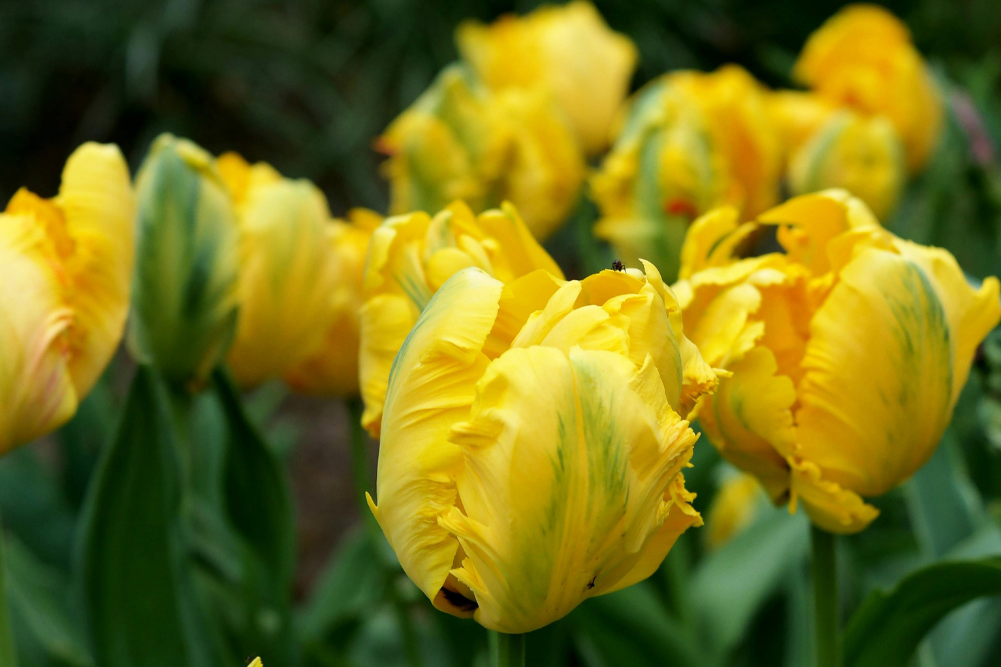How to grow a vertical garden
Vertical and hanging gardens are fashionable and gorgeous, covering once-bare concrete walls from tiny to many stories high. They can also be incredibly expensive, the largest and most exquisite tailor-made for their location.
A large vertical garden needs to be carefully engineered, sited and planned. Beware of gardens falling on guests, small children or curious cats, rotting wood supports or patio floors from constantly moist soil, and dribbling dirt.
If you are, however, less ambitious — and more inventive — you can create your own vertical garden. Here are a few points to remember:
1. Dirt is heavy; water is heavier — 1L equals 1kg. Wet soil can be very heavy indeed, especially if pumpkins, melons or giant zucchini have added their own weight to a basic garden. Make sure the wall, joist, rafter or whatever else your garden is supported by can take the weight of the soil plus water — and the increasing weight as the plants grow. Check it is sound, too.
2. Gardens are moist, even if the soil is dry. Watch out for rotting walls below the garden or rot where water drips or sits.
3. Track the drips! If you have a neighbour in the flat below they may not like your garden overflow.
4. Beware of falling fruit. And pumpkins.
A small way to start is with a 1m-wide by 1m-long by 30cm-wide weed-mat garden. Weed mat is porous. Other materials can be used, too — I have seen an excellent hanging garden made out of recycled chook-food bags. But beware of plastic, which rots and may collapse unexpectedly. Carpet is possible but, again, look out for rot. An elderly doona will work but for one season only, then compost it.
Step by Step
Step 1. Buy the weed mat or whatever other material you choose.
Step 2. Cut it into metre-wide and metre-long strips.
Step 3. Sew together two sides, back and front, like you would if making a quilt, and stitch three rows to divide it up longways and crossways. You will end up with something that looks like an ugly patchwork quilt.
Step 4. Hang up the mat. You can:
- nail it to the top of the wall (use several nails, as it gets very heavy)
- fasten ropes to the top and attach the ropes to the other side of the wall (good for brick walls where you can’t hammer in nails)
- hook it onto the top of the wall with several pieces of bent wire (again, use a lot as it’ll get heavy)
- nail it to a post
- hang it on a frame
Step 5. Cut small slits in the top of each “patch” and stuff each with potting mixture or silt or compost if you have some. Don’t stuff in too much or it’ll spill out later.
Step 6. Plant one seedling in each hole.
Step 7. Water. Spray the whole thing with the hose.
Plants to grow
The trick to planting hanging gardens is to choose plants that like hanging out, preferably together. Avoid any that grow too big — they’ll either drag the garden down or possibly fall out. Sprawlers are great and they quickly cover the bag.
Consider where the garden is, too: sunny or semi-shaded. In cool climates, vertical gardens gain the warmth of the walls around them. In hot climates, an exposed hanging garden will quickly become hot and dry.
Flowers. Pansies, impatiens, heartsease, alyssum, nasturtiums and petunias, petunias, petunias and pelargoniums, especially climbing ones. Miniature roses also work, as long as you feed and water often. In the worst positions, try echeveria or zygocactus, which bloom and bloom all winter.
Herbs. Basil, parsley, coriander, aloe vera … Vertical gardens are superb for hot-climate herbs like lemongrass. It doesn’t “hang” but it does grow tall and clump wonderfully, so with good watering and feeding you’ll have the “bed” covered in a few months. Tarragon is also superb as would be a collection of thymes — they, too, love the sunlight. Golden marjoram can look fantastic, quickly forming its own dense vertical mat. Chives do excellently, as do garlic chives.
Vegetables. Lettuces work with daily watering and weekly feeding, especially red frilly ones that are more heat-hardy than green ones. Cherry tomatoes are good, again if regularly fed, but the big-fruited ones may become too heavy. Sun- and drought-hardy apple cucumbers are perfect. Try shallots, using their tops like spring onions, or spring onions themselves. They grow fast and prolifically.
Fruit. Strawberries are the classic vertical garden fruit. Try several varieties so you get more constant crops. Rhubarb also does surprisingly well. The stems won’t get very big but, if you keep picking the stems, you’ll get fruit every week all year round.
Or do the most old-fashioned “vertical garden”, which has been around for several thousand years: go for pots and trellises, climbing grapes, kiwifruit, rambling roses, bougainvillea and hops.
This is also suitable for skyscrapers. If you have enough plants, a trellis and a watering system, you can reach for the sky.








